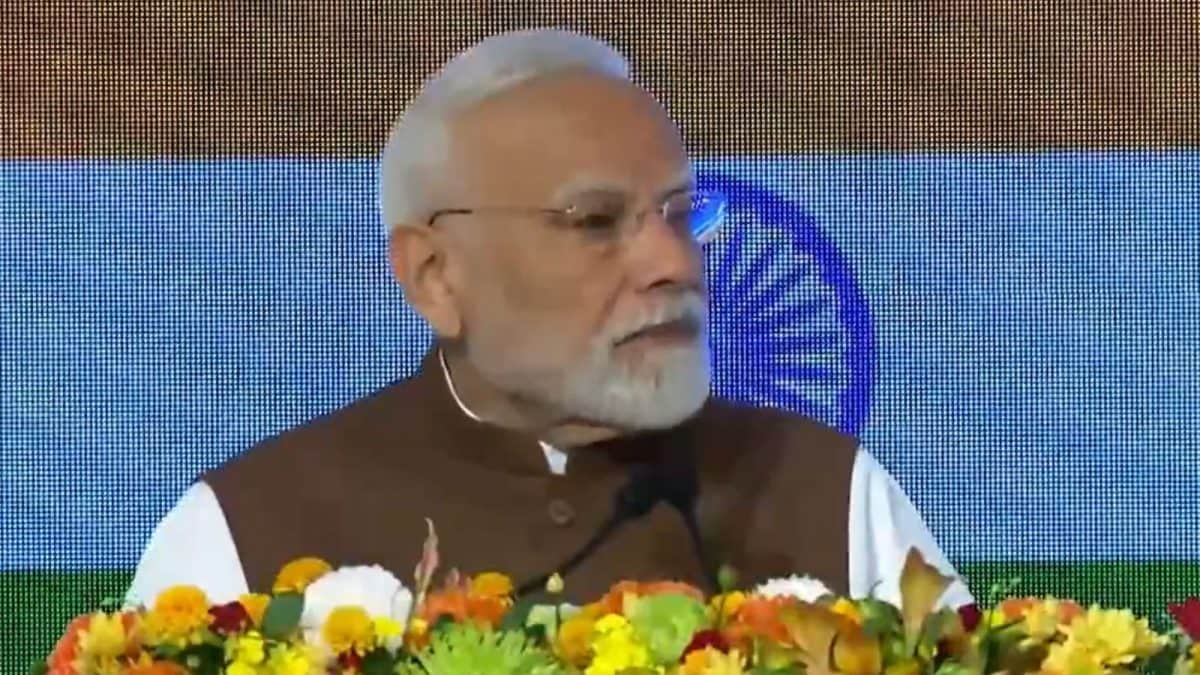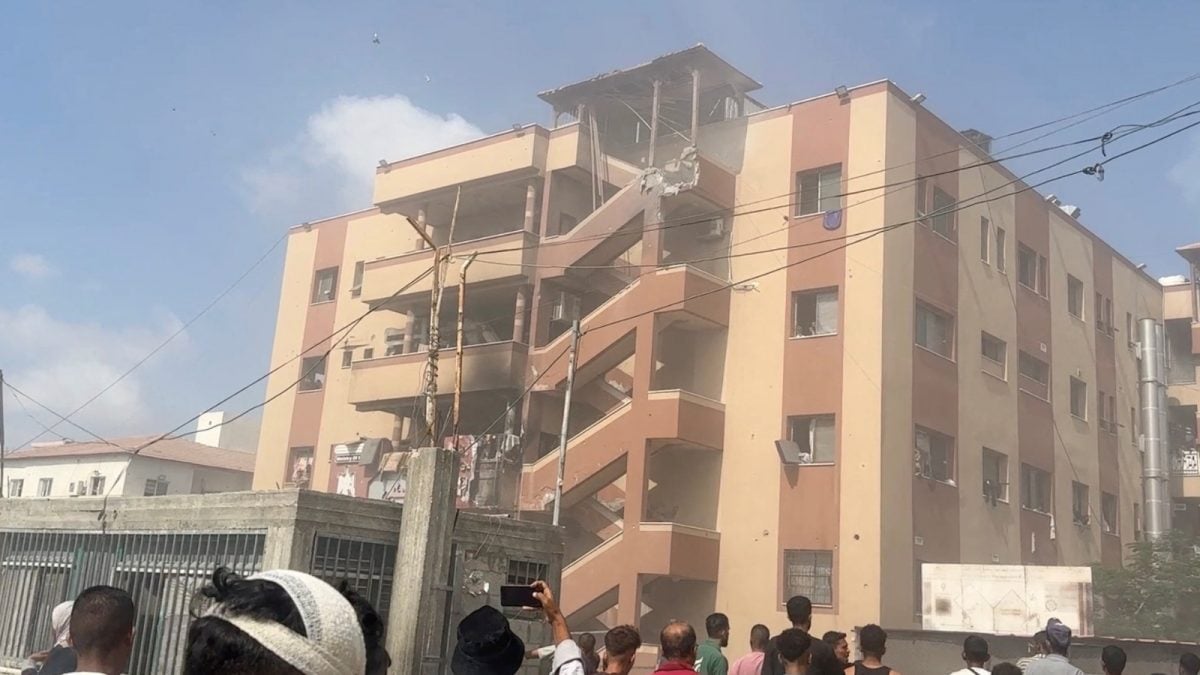Last Updated:July 31, 2025, 14:20 IST
The Gaza Health Ministry says at least 89 children and 65 adults have died of malnutrition-related causes since the war began, with most deaths occurring in the last two months

The United Nations World Food Program says one-third of Gaza's population is surviving without consistent access to food. (AP Photo)
The Gaza Strip has become what United Nations officials now describe as the “hungriest place on Earth", with its 2.3 million residents facing acute food shortages and the very real threat of famine. With aid convoys under attack, civilians dying in line for food, and starvation claiming dozens of lives each week, Gaza’s humanitarian collapse has reached a critical juncture.
On Wednesday, July 30, at least 48 Palestinians were killed and dozens more injured as they waited for food near the Zikim Crossing, Gaza’s main entry point for humanitarian supplies. It remains unclear who opened fire. The Israeli military, which controls the crossing, has not commented. Shifa Hospital in Gaza City reported receiving many of the wounded, while Al-Saraya Field Hospital confirmed over 100 dead and injured.
The chaos unfolded as US Middle East envoy Steve Witkoff arrived in Israel for urgent talks. The US is under mounting pressure to do more to alleviate suffering in the coastal enclave, where Israel’s military campaign and blockade, triggered by Hamas’ October 7 attack, have created what food crisis monitors call a “worst-case scenario of famine".
“I have no flour, no oil, no sugar, no food," a Palestinian man told Al Jazeera, adding that he collects moldy bread and feeds it to his children. “I want to bring a packet of flour for my children. I want to eat. I am hungry," he added.
The United Nations World Food Program says one-third of Gaza’s population is surviving without consistent access to food, while the Integrated Food Security Phase Classification (IPC), the world’s leading body for classifying food crises, has warned of “widespread death" if conditions persist. Still, a formal famine declaration has not yet been issued.
What Constitutes A Famine?
According to the IPC’s classification system, famine (the highest level of crisis on its five-tier scale) is declared only when three conditions are met: at least 20% of households face extreme food shortages, 30% of children under five are suffering from acute malnutrition, and more than two people per 10,000 are dying each day from starvation-related causes. While Gaza has not officially met all three criteria, UN agencies warn that the thresholds are close.
Recent IPC data from May estimates that nearly every person in Gaza falls under IPC Phase 3 (Crisis) or worse. Around 4,70,000 people, 22% of Gaza’s population, are already in IPC Phase 5 (Catastrophe). Over 1 million are in Phase 4 (Emergency). The remainder is in Phase 3.
From April 2025 to March 2026, the IPC projects that 71,000 children under five will face acute malnutrition in Gaza. Of these, 14,100 are likely to develop severe complications. Some 17,000 pregnant and lactating women will also require urgent nutrition treatment.
Aid Arriving, But Not Enough
Despite Israeli pledges to ease restrictions, aid agencies say the flow of humanitarian assistance remains deeply inadequate. Israel said last week that around 4,500 aid trucks have entered Gaza since May, bringing in items including 2,500 tons of baby formula and high-calorie food. But the UN says 500 to 600 trucks are needed daily to meet basic needs, levels last seen during a brief ceasefire in early 2024.
On Tuesday, only 220 trucks crossed into Gaza, according to COGAT, the Israeli military agency overseeing aid logistics. Crowds, often desperate and chaotic, continue to swarm distribution sites. More than 1,000 Palestinians have reportedly been killed while trying to access aid since May, according to local health officials, UN monitors, and eyewitnesses.
The violence is most intense near food distribution points operated by the Israeli-American backed Gaza Humanitarian Foundation (GHF). Human rights organisations, including the UN’s OHCHR, have accused Israeli forces and GHF contractors of using excessive force. Israel denies targeting civilians and says its troops only fire warning shots. GHF claims it uses non-lethal methods like pepper spray and warning fire to manage crowds.
Starvation Deaths Mounting
The Gaza Health Ministry says at least 89 children and 65 adults have died of malnutrition-related causes since the war began, with most deaths occurring in the last two months. On Wednesday alone, seven Palestinians, including a child, died of hunger. Aid drops from international forces continue, but many food packages land in restricted zones or the sea, forcing civilians to wade through rubble or swim to retrieve soaked supplies.
Israel continues to reject claims that starvation is taking place, accusing international organisations of exaggerating the crisis and detracting from ceasefire negotiations. Israeli officials insist the focus should be on Hamas, which launched the war on October 7, killing around 1,200 people and taking 251 hostages. Approximately 50 remain captive, including about 20 believed to be alive.
Since then, more than 60,000 Palestinians have been killed in Israeli military operations, according to the Gaza Health Ministry. The toll includes both civilians and combatants, though the ministry, operating under the Hamas-run government, does not differentiate.
Calls For Famine Declaration Grow
Experts say a formal famine declaration could galvanise the global response, unlocking additional emergency resources and diplomatic interventions. Recent famine declarations include Somalia (2011), South Sudan (2017, 2020), and parts of Sudan’s Darfur region in 2024.
But declaring famine is a politically sensitive move, one that governments and multilateral institutions often avoid until all conditions are met. Still, the UN has emphasised that Gaza’s crisis is one of the worst it has ever encountered, citing the scale of obstacles in delivering aid, the number of aid-seekers being killed, and the growing collapse of public order.
view commentsLocation :Palestine
First Published:News world UN Says Gaza Now The 'Hungriest Place On Earth'. So Why Isn't Famine Declared Yet?
Disclaimer: Comments reflect users’ views, not News18’s. Please keep discussions respectful and constructive. Abusive, defamatory, or illegal comments will be removed. News18 may disable any comment at its discretion. By posting, you agree to our Terms of Use and Privacy Policy.
Read More

 4 weeks ago
4 weeks ago














